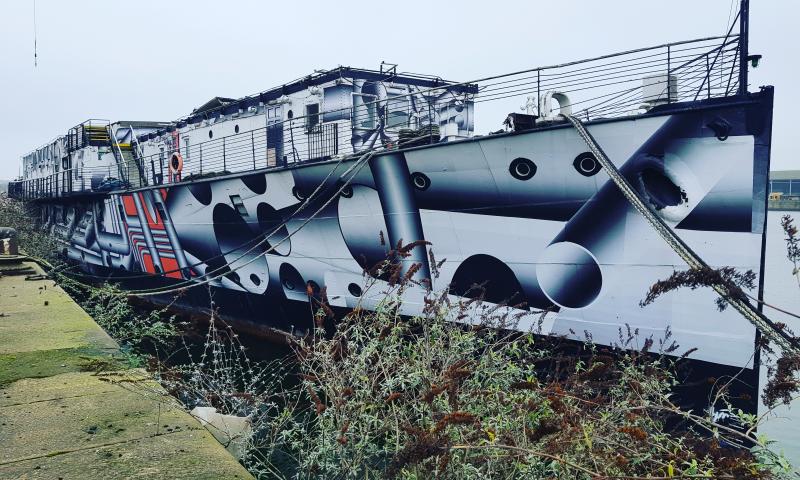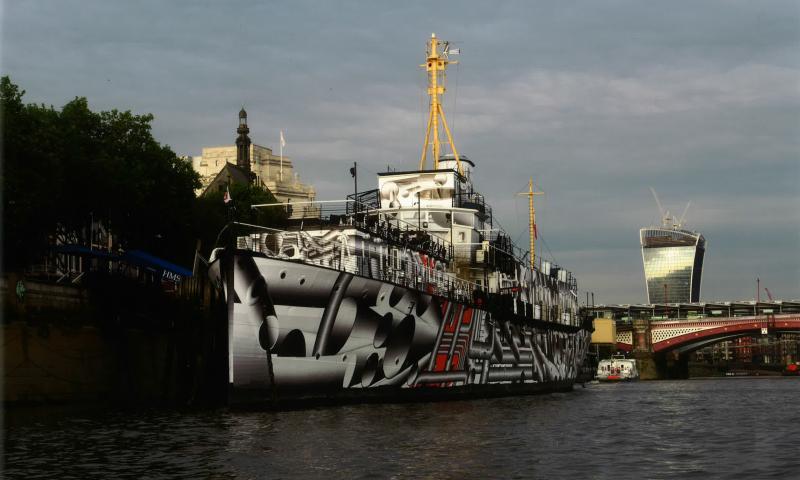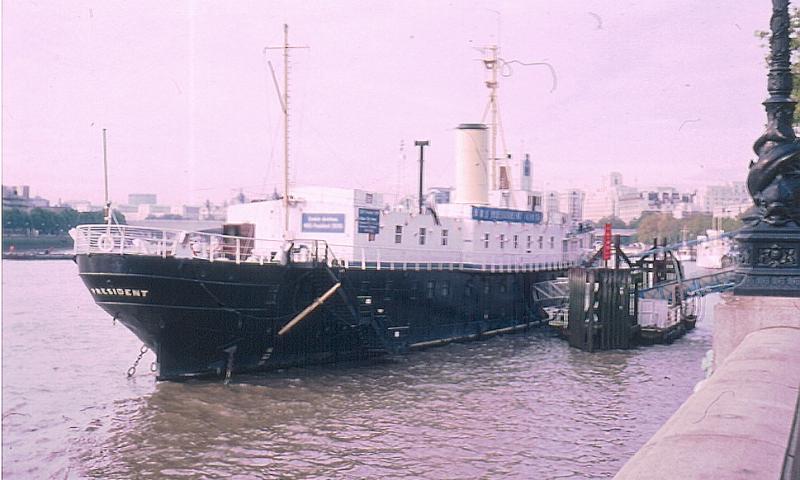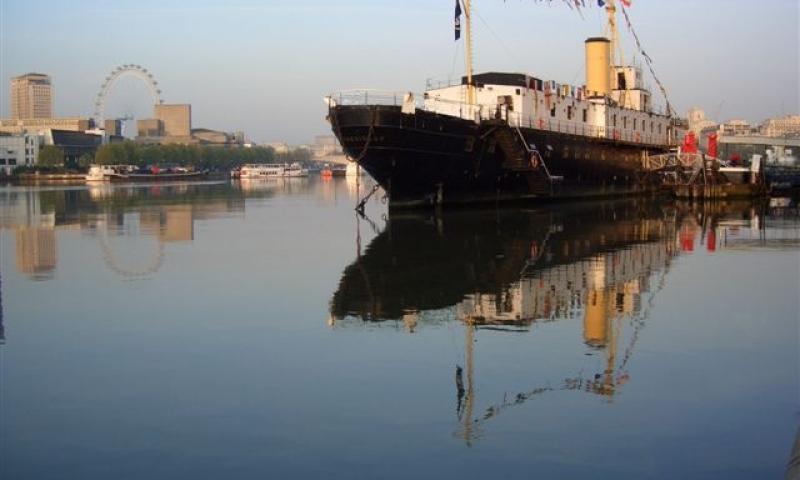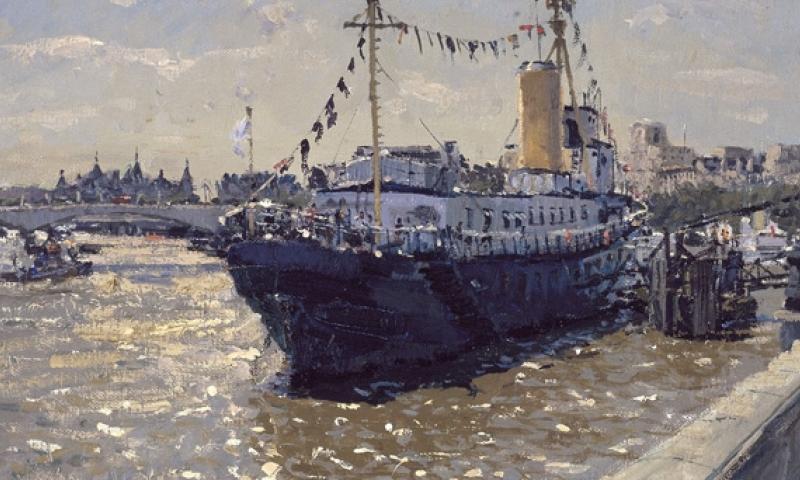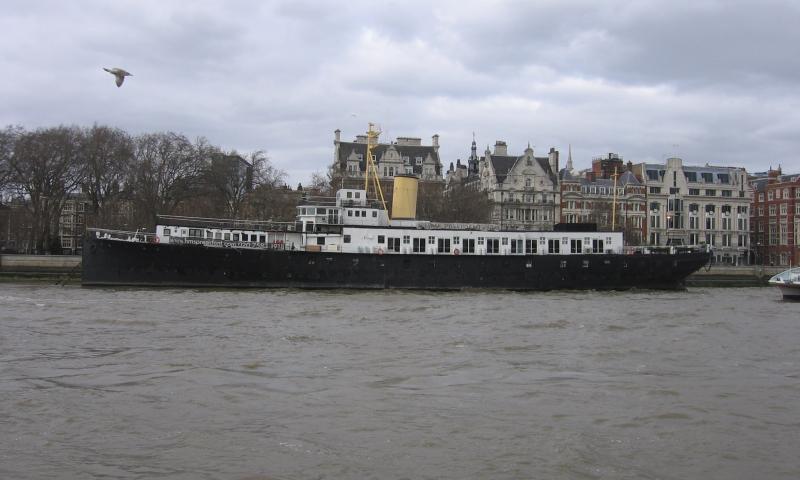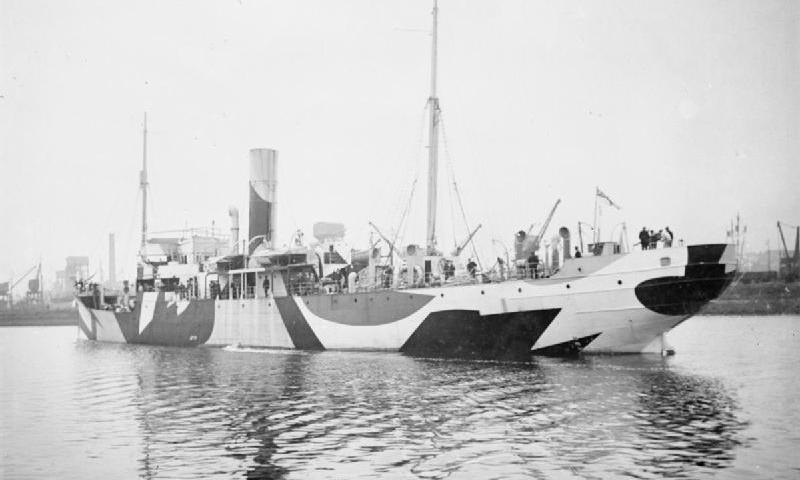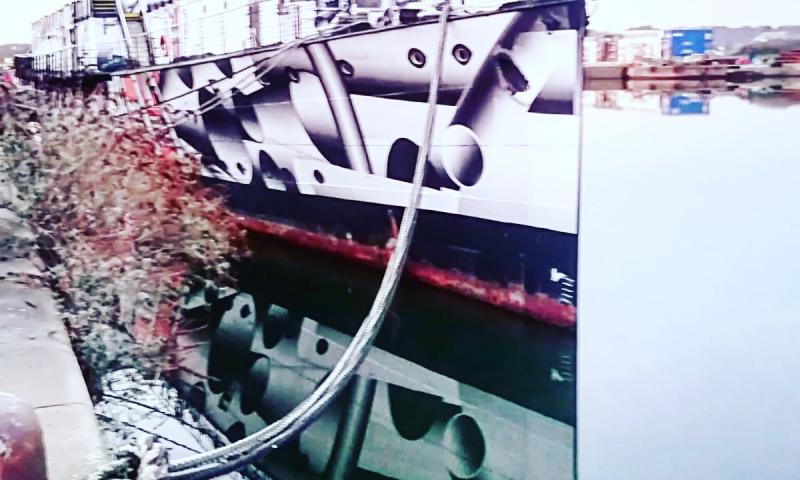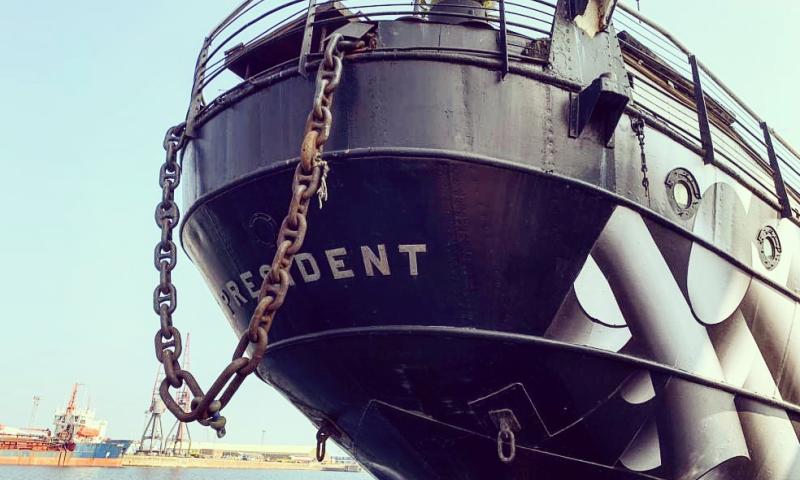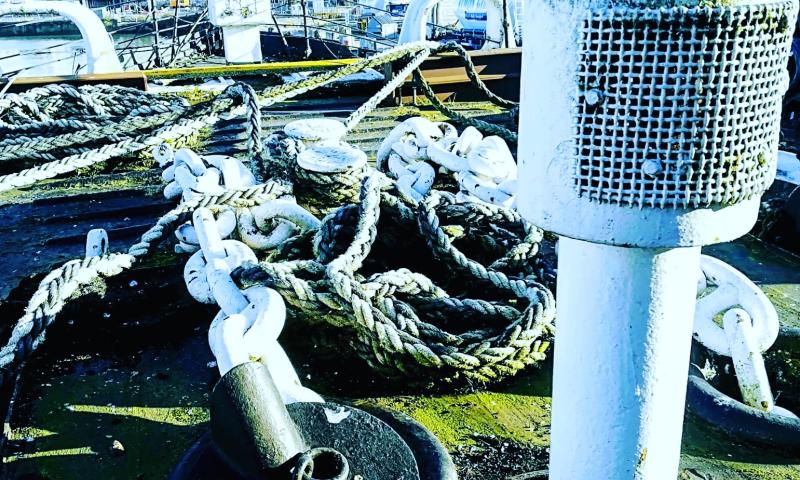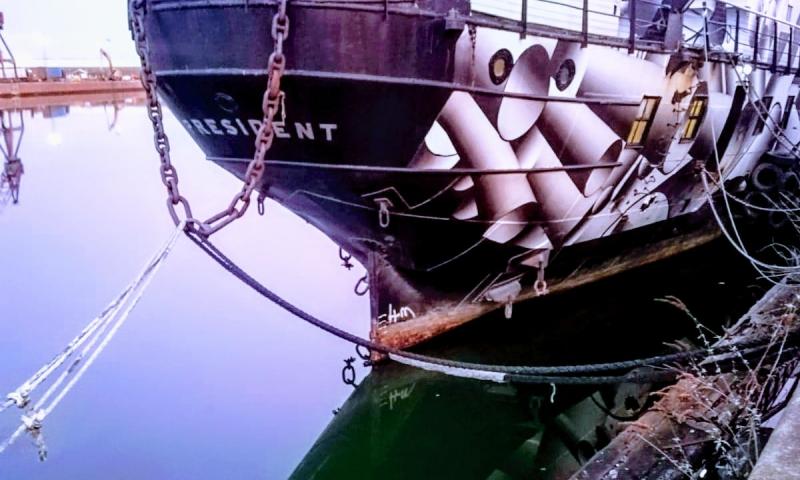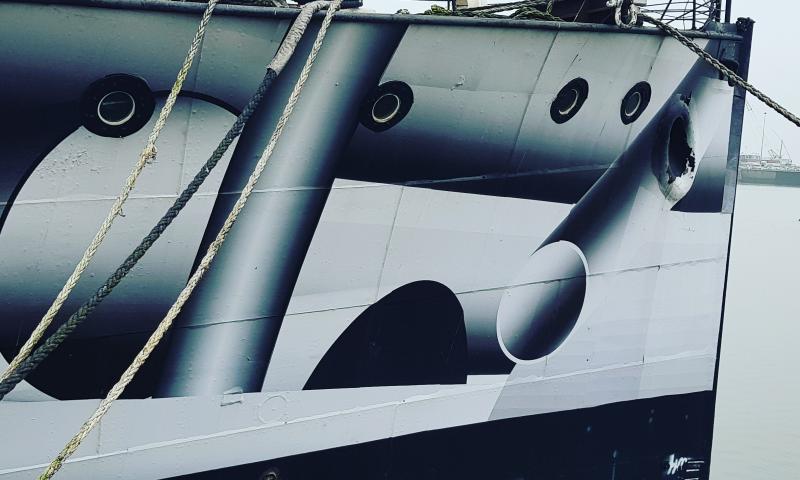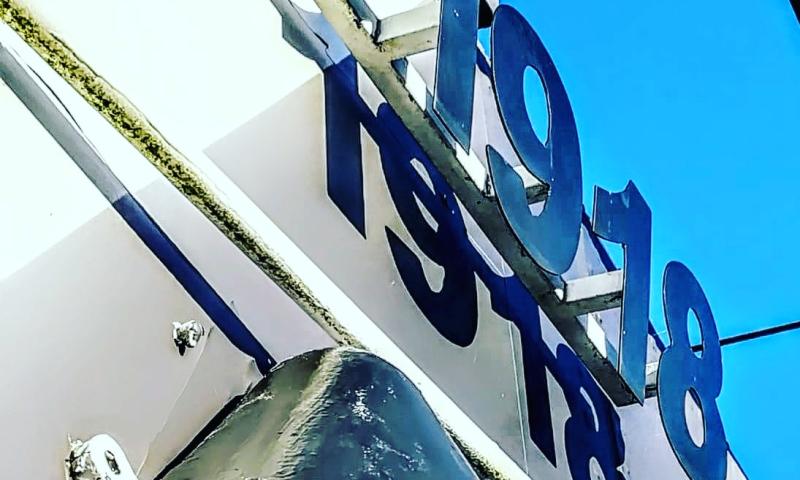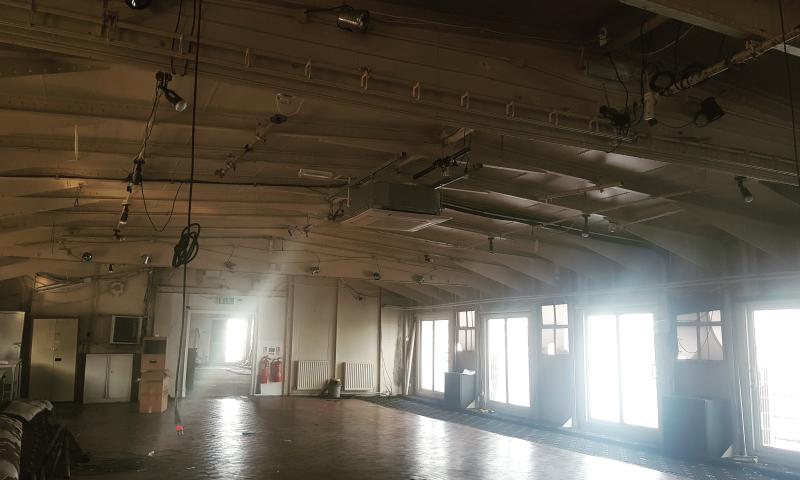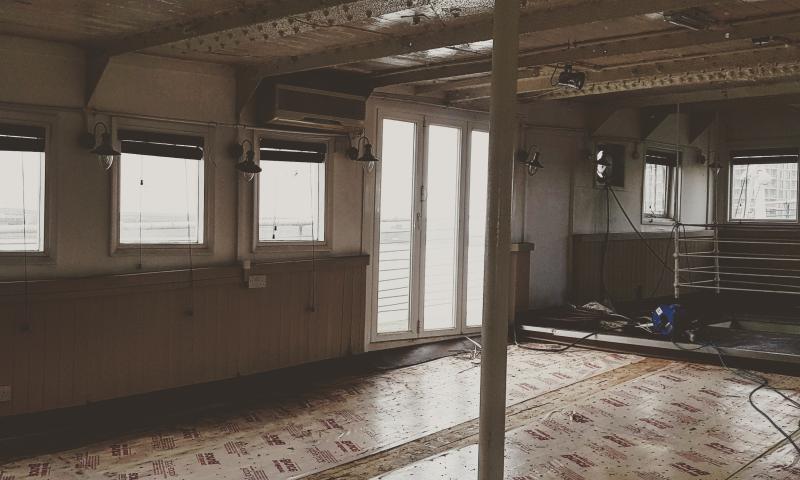Previous names
- 1917 - 1921 HMS Saxifrage
Details
Construction
Dimensions
History
One of the last examples of a Royal Navy sloop, H.M.S. PRESIDENT was built in the closing stages of the First World War in 1917 by Lobnitz & Co. Limited of Renfrew in Scotland as the Flower-class sloop H.M.S. SAXIFRAGE. Sloops of this class were named after different flower varieties; H.M.S. SAXIFRAGE was named after the flower known as London Pride. She was launched on Tuesday 29 January 1918, and commissioned on Monday 25 March 1918.
SAXIFRAGE was built for convoy escort and anti-submarine duties to help keep the U-boat scourge at bay. She was one of a group of vessels commonly known as ‘Q-ships’. The aim was for the vessel to appear to be an ordinary merchant ship, but in fact to be hiding armaments such as 4-inch and 12-pounder guns ready to attack and take the enemy by surprise. The thinking was that a U-boat would be unwilling to use a precious torpedo on a small merchant ship, so would surface to sink her by gunfire or explosives, unaware that the merchant ship was heavily armed.
Most of the Q-ship crew would appear to be abandoning ship in panic, but a small team of naval officers would remain on board to remove the covers disguising the guns, and open fire on the U-boat once it was in range. U-boats would often send a team with explosives over in a small boat with the intention of sinking the merchant vessel. The role of Q-ships like H.M.S. SAXIFRAGE was to lure and sink the U-boats.
As an Anchusa- Flower class sloop H.M.S. SAXIFRAGE had an overall length of 262.5ft, a beam of 35ft, and a draft of 13.7ft. Her gross tonnage was 1,290, and she was propelled by a 4 cylinder triple expansion engine, generating 2,500 hp (1.864 KW). She could carry 260 tons of coal, and a complement of 93 crew. However, in addition to her armaments, H.M.S. SAXIFRAGE had another trick up her sleeve, and that was the use of dazzle camouflage.
In 1914 a zoologist from Glasgow University, Professor Graham Kerr, suggested to the Admiralty that lessons about the protection of vessels at sea could be drawn from nature. Some animals gain protection by confusing their attackers. Kerr suggested that ships could be painted using the bold stripes of zebras, skunks, ringed plovers and other creatures.
The Admiralty asked the artist Norman Wilkinson to develop the concept, and he assembled a group of artists, model makers and students to come up with designs and test them out. They called themselves the Dazzle Section. Their solution was to paint ships in striking patterns, and a very wide range of both colours and patterns were used.
As she was only launched at the beginning of 1918 (under the command of E.J Birch R.N), H.M.S. SAXIFRAGE served for just 8 months before the end of hostilities. However, her log books indicate that she travelled to numerous ports around the country including Liverpool, Plymouth and Chatham. She never actually sank a submarine but was involved in a skirmish with one, engaging a U-Boat during the remaining months, but did not succeed in sinking it.
She was known as H.M.S. SAXIFRAGE between 1917 and 1921, and renamed H.M.S. PRESIDENT in 1921, the name she retains today. H.M.S. PRESIDENT became a R.N.V.R. drill ship in 1922, when she was moored on the Thames Embankment in London. She has remained there ever since, as a constant backdrop to the river and the city. When she was a drill ship all naval officers employed in the Admiralty in London were nominally appointed to H.M.S. PRESIDENT.
HMS President remained on the Embankment until 2016 as a constant backdrop to the river and the city. Due to the planned construction of the Thames Tideway Tunnel, HMS PRESIDENT then had to leave her berth next to Blackfriars Bridge and was towed down river to Chatham with her funnel and wheelhouse removed, where she has since been moored.
Watch this short film on the history of HMS PRESIDENT.
Significance
1. What is the vessel’s ability to demonstrate history in her physical fabric?
HMS PRESIDENT'S hull and forecastle remain as built, complete with anchor chains, whilst the rest of the vessel follows her 1950s formation, representing her role as a Royal Navy training ship between 1922 and 1989. In 1922, alterations to her physical fabric included fitting square windows on the lower decks, removing her steam triple expansion engines and adding a top deck for parade, drilling and small arms gunnery practice. In this way, although her internal accommodation is set up as offices and function space, her current configuration reflects the two significant eras of her history, her First World War role and her long service as a drill ship. Unfortunately, her funnel was damaged beyond repair in 2016, but photographs and measurements were taken so it could be replicated in future.
2. What are the vessel’s associational links for which there is no physical evidence?
HMS PRESIDENT was built as an Anchusa class corvette by Lobnitz Co Ld at Renfrew in 1918, giving her a Scottish association. She was commissioned as a Flower class anti-submarine Q-ship (often referred to as a ‘Mystery Ship’) and is now one of three surviving Royal Navy warships built during the First World War. Her original name, HMS SAXIFRAGE, relates to the Saxifrage genus of plants which includes the variety London Pride and underlines the long connection with the city which she now enjoys. In 1922, she was moored permanently at Blackfriars on the Thames and was used as a Royal Naval Reserve drill ship for sixty-five years. At this time, she was renamed HMS PRESIDENT after a number of distinguished naval vessels with this name, dating back to 1645. HMS PRESIDENT has been recorded on the National Register of Historic Vessels since 1996 with the status of being a member of the National Historic Fleet.
3. How does the vessel’s shape or form combine and contribute to her function?
HMS PRESIDENT retains her distinctive hull form which was designed to look like a merchant ship, allowing her to fulfil her role as a decoy to lure U-boats to the surface. In 2014, as part of the First World War commemorations, her hull was covered once more in a ‘dazzle’ design, courtesy of artist Tobias Rehberger. Acting as an escort vessel to merchant fleets, her 4-inch and 12-pounder naval guns would have been well concealed from sight. In this capacity, she was one of the first purpose-built anti-submarine fighting ships and a forerunner of the frigates of modern times. After her change of use to a training vessel, she now boasts four decks, with internal spaces including the Captain’s Quarters, Drill Hall and adjacent Gunroom, Quarter Deck and Ward Room. HMS PRESIDENT is currently at Chatham docks, where she was refitted in her Navy days, pending dry dock availability for conservation work.
Source: NHS-UK team, Revised June 2021
This statement was updated as part of the Heritage Lottery funded First World War project. http://www.ww1britainssurvivingvessels.org.uk/
Key dates
-
1917
Built by Lobnitz & Co Limited, Renfrew as HMS SAXIFRAGE, a Q ship
-
1922
Moved to Thames Embankment, London and engines removed
-
1922
Became the HQ of the RNVR London Division for the next 66 years
-
1987
Ownership taken over by HMS President (London) Limited. Used for corporate and private events
Sources
Brouwer, Norman J, International Register of Historic Ships, Anthony Nelson, pp168, Edition 2, 1993
Sullivan, Dick, Old Ships, Boats and Maritime Museums, Coracle Books, 1978
The Times: Ship Comes In, 10 February, 1998
Own this vessel?
If you are the owner of this vessel and would like to provide more details or updated information, please contact info@nationalhistoricships.org.uk



